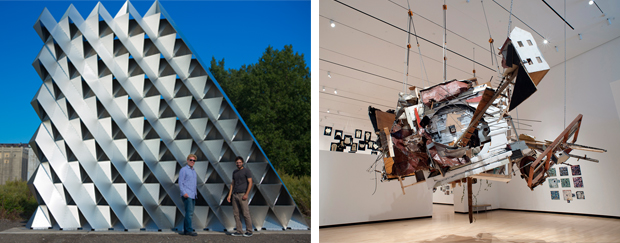Reading 1
Nigel Cross, “Designerly Ways of Knowing”
Question 1:
Cross describes the values of design as being such; practicality, ingenuity, empathy and a concern for appropriateness. Is he describing what the ideal values of design are? In reality, the design process might not be practical or have a sense of appropriateness, but rather be the opposite. All avenues of thought are explored through design.
Question 2:
Peters states that “one is trained as a designer, or doctor, or philosopher, but that alone does not make one educated. It is ironic that we state that “you must go to college and get an education”. Architectural schools in general do state that they are training you to be a designer. Does the idea of being truly educated in the way that Peters is describing it come from the practice of design in the real world? Is one considered “educated” once t hey take the knowledge they have learned and apply it to the real world? If this is the case, are professors who only stay in academia and do not practice considered “educated”?
Question 3:
Cross stated, “Concrete/ironic modes of cognition are particularly relevant in design, whereas the formal/symbolic modes are more relevant in the sciences.” Why is this? Can’t the process of gathering knowledge in design be formal or symbolic as well?
Reading 2
Johan Verbeke, “This Is Research By Design”
Question 1:
Is design too broad a subject to incorporate into research? Glanville stated that “The problem for design and research is that the academy has become too specialized. Science used to mean knowledge. Today, it has come to be known as a particular type of knowledge.” There are many different aspects of design. In order to research by design, does design need to be more focused into a specific category or means of design?
Question 2:
If research is design, then is design research? Would the act of researching through design mean that you are researching your research? By that I mean, the design process, which is considered research, creates something that can be subject to evaluation and further research.
Question 3:
“Research by design results in the development of spatial understanding and human ecology which has daily impacts on behavior and living conditions. It is not about analytical thinking in the narrow sense, but rather exploration.” Does this article contradict whether or not design is “Research” or “research”, as suggested in the previous classes reading by Frayling? By saying research by design is about exploration, does this mean that this method of research is research with a little “r”?



